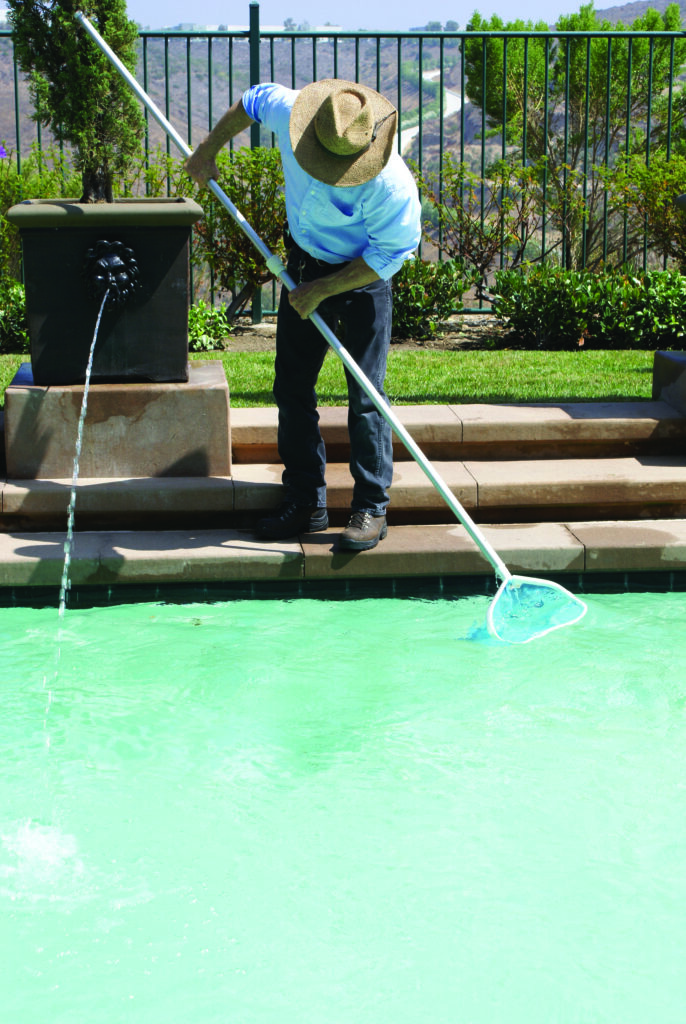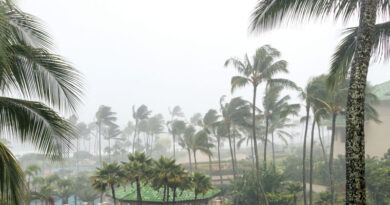Sanitation alternatives for swimming pools at timeshare resorts
Chlorine came into use as a sanitizing agent for drinking water and swimming pools in the latter half of the 19th century. Today it’s the world’s most popular sanitizing agent – but it has drawbacks.
When combined with organic matter, chlorine can produce toxic byproducts called trihalomethanes (THMs), which increase the levels of chlorine and organic matter in a pool. Chloramines (another chlorination byproduct) can irritate the eyes, nose, and throat; cause rashes and allergies; and increase the potential risk of asthma and bronchitis.
Moreover, chlorine requires the addition of cyanuric acid, a stabilizer that helps the water resist sunlight. Many pool users don’t know when and how much stabilizer to add. Using the wrong quantity of stabilizer at the wrong time can increase chlorine consumption and damage the pool’s surface, corroding its coping, decking, floor, and walls at a timeshare resort.
Despite these drawbacks, chlorine effectively curbs algae and bacteria growth, oxidizes particulates to clear the water, and sanitizes the water.
Although chlorine fulfills these basic goals of pool safety, other alternatives exist, depending on your budget and maintenance requirements at your timeshare resort. Some of these alternatives follow entirely different chemical pathways to pool sanitation.

First cousins
Chlorine is one of a class of chemicals in the periodic table of the elements known as halogens. (Others are fluorine, chlorine, bromine, iodine, and astatine, occupying group VIIA (17) of the periodic table. They are reactive nonmetallic elements that form strongly acidic compounds with hydrogen.) When halogens react with metals, they form salts known as halides. The halide ion has a negative charge and the metal ion has a positive charge.
For example, when chlorine reacts with sodium, it forms sodium chloride (table salt).
Substitute bromine for chlorine in this reaction and the result is also useful for pool chemistry—but with caviats. Bromine yields a thin brownish liquid that is gentle to the skin, but hard to stabilize. As a result, it is best suited for use in indoor pools and spas. Cost is also a factor; bromine is more expensive than chlorine.
Related: Resort water heater blessings and pitfalls
PHMB:
Polyhexamethylenebiguanide (PHMB) is a synthetic, positively charged polymer (long chain of repeated molecular units).
Among its attributes is the ability to attach to bacteria, which cause sickness and infection in swimmers. Affected bacteria leak and then die.
PMBH is an ingredient in many proprietary non-chlorine pool sanitizers, including Baquacil®, Baqua Spa®, Clear Comfort, Maxipolish, Polyclear™, Splashes, SoftSoak®, SoftSwim®, and Revacil®. Some of these also contain hydrogen peroxide (H2O2), making the purchase of a separate hydrogen peroxide oxidizer product redundant. Before deciding, read labels and also a succession of email threads dating back more than a decade.
Copper
Copper ionization is an effective option for a chlorine-free pool. With no residual chemicals to irritate the eyes and skin, it is more cost-effective and produces healthy pool water.
Pristine Blue, developed by Earth Science Laboratories in Rogers, AK, is an algaecide and non-public health bactericide. Its main ingredient, copper sulfate pentahydrate, comprises up to 19.8 percent of its active ingredients. This proprietary technology uses positively charged copper ions to destroy all the negatively charged bacteria and other germs in the pool. Users add Pristine Blue to pools and spas at the beginning of the season and top it off every two weeks.
A more involved copper ionization system from Intec America in Franklinton, LA, includes an electronic control unit, test kits, and a copper electrode. A low-voltage current releases positively-charged copper ions that attract the negatively-charged bacteria and algae, and penetrate their cell membranes. The recirculating water produces more such ions. Sunlight doesn’t affect copper ions, so they don’t need a stabilizer.
Copper causes no allergies and is an essential element in the human body, aiding in bone formation, regulating skin functions, promoting red blood cell integrity, and contributing to nervous and immune system functions. Doctors recommend adding copper to the diet to improve heart health and prevent the onset of cancer. It is also antibacterial, anti-inflammatory, and can boost brain health.
Reverse osmosis
Reverse osmosis is a selective filtration process employing a semi-permeable membrane that filters out larger contaminants while letting the smaller ones pass through. The membrane traps contaminants such as viruses, per- and polyfluoroalkyl substances, and other poisons while allowing relatively pure drinking water.
Do a test at your timeshare resort to see what alternatives to chlorine work best for your swimming pools.
George Leposky is a science and technology writer. His daughter, Marjory E, Leposky, assisted with research for this article.



